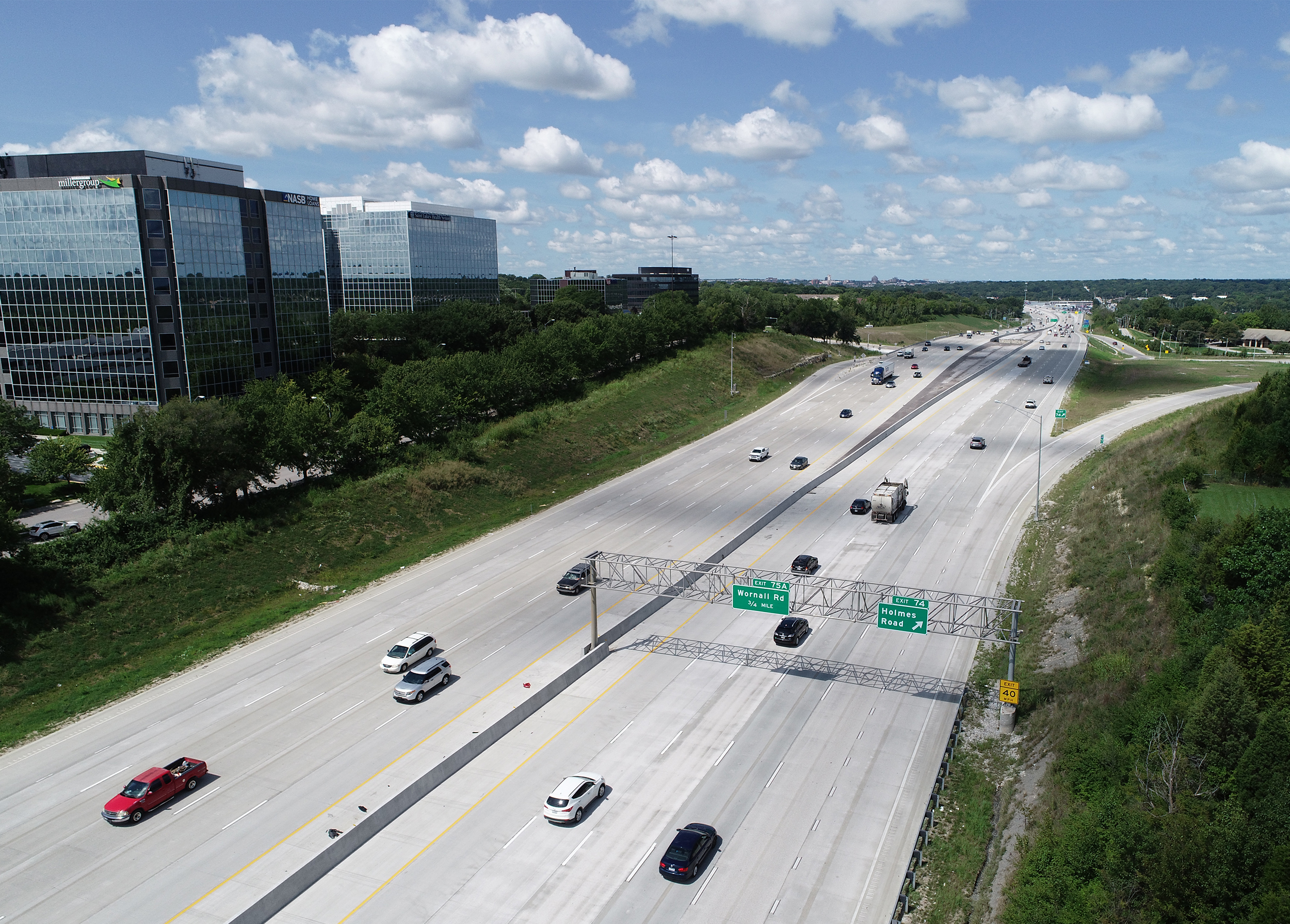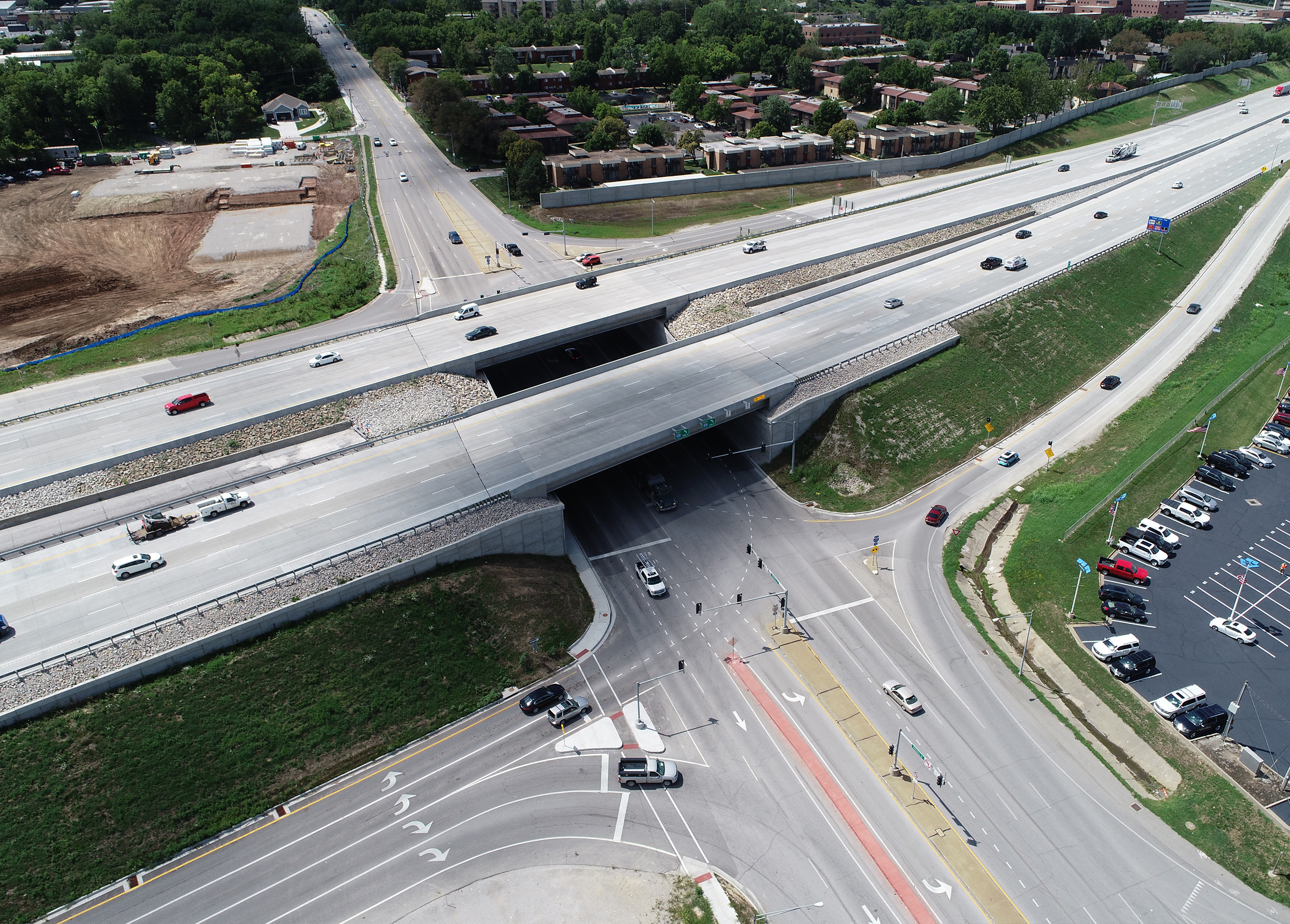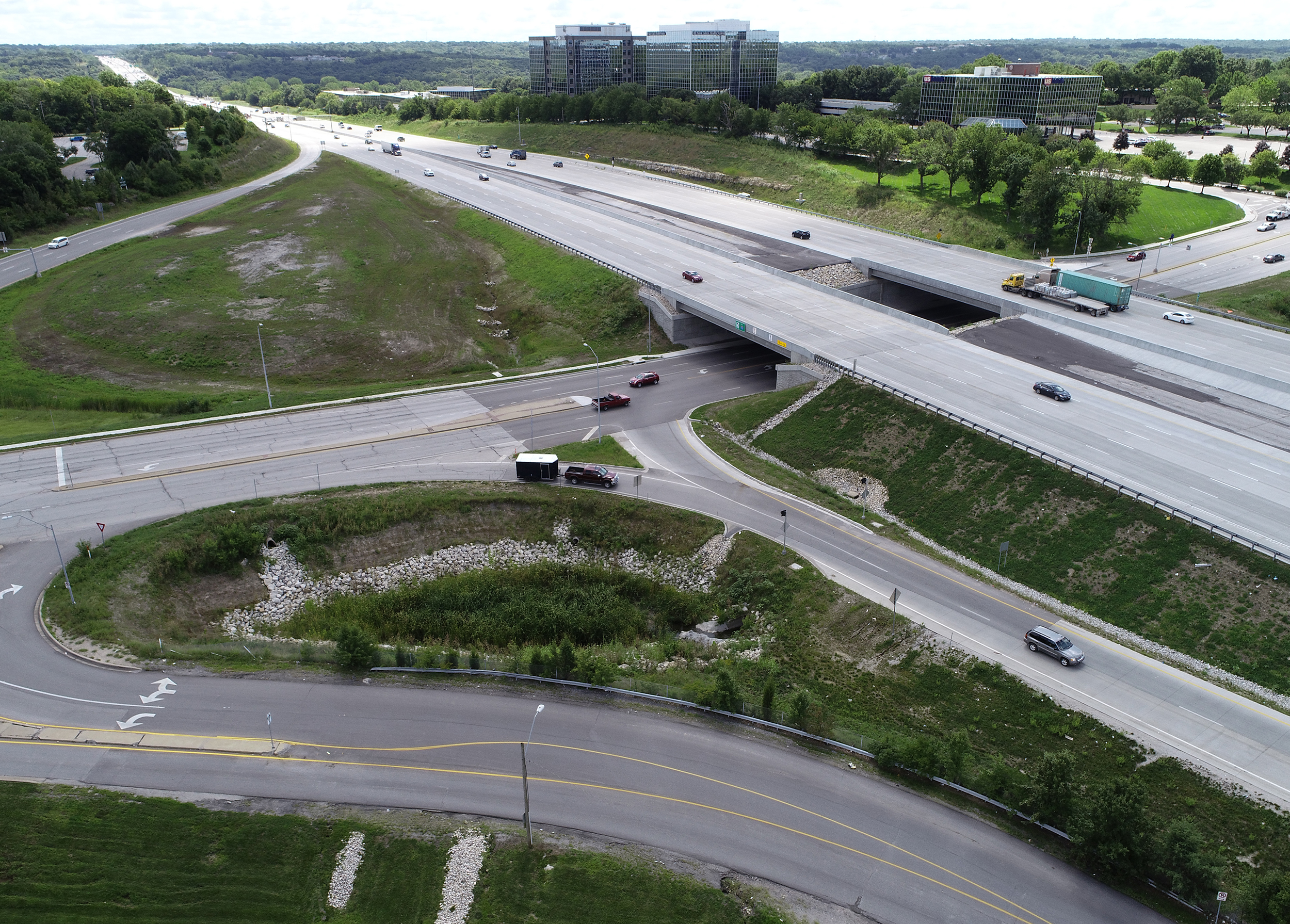I-435 South Loop Link Design-Build
Wilson & Company teamed with Radmacher Brothers Excavating Company for the Missouri Department of Transportation’s (MoDOT) $64.5 million design-build project in Kansas City, MO. The Radmacher-Wilson team constructed a full-depth concrete overlay and widening for this 3.5-mile stretch of I-435, MoDOT’s most heavily traveled section of interstate in the Kansas City area, with heavy volumes of commuters and trucks. The team provided new pavement, additional lanes, two bridge rehabilitations, two bridge widenings, and four new interchange bridges, exceeding MoDOT’s expectations and maximizing the project goals. The project was delivered in May 2020.
The Additional Applicable Standard of a full-depth concrete overlay helped the team deliver the full pavement design life while implementing an innovative traffic handling plan that provided four lanes of traffic in both directions during construction. Traffic lanes during construction were designed as long, straight alignments, improving commuter and worker safety.
The team developed a robust Quality Management Program that was specific to the project, which included both Quality Control and Quality Assurance for design and construction. Design documents were audited for the quality process before delivery, and construction quality documentation was both timely and accurate. Weekly progress meetings included discussion and monitoring of the quality process.
As part of the initial activities, the Radmacher-Wilson team developed and obtained permits and approvals from regulatory authorities, including the United States Army Corps of Engineers (USACE), the Kansas Department of Transportation (KDOT), Federal Highway Administration (FHWA), and the Missouri Department of Natural Resources (MDNR). The design team obtained a No-Rise permit and navigated the Union Pacific Railroad (UPRR) approval process within the confines of the design-build process.
The design approach reduced the footprint of the project to minimize impacts on environmentally sensitive areas, such as avoiding Section 4(f) impacts and reducing wetland impacts. The team implemented a Stormwater Pollution Prevention Plan (SWPPP) and land disturbance permit in accordance with the Consent Decree, minimizing disturbance to the Blue River.
Coordinating with railroad accommodations was the first step in the design of the project. The design of the UPRR bridge rehabilitation (deck replacement) and widening was advanced at the earliest stages of design to begin the approval process as early as possible to minimize impacts on the construction schedule.
Early in the design, the team began coordinating with utilities, including Lightcore (CenturyLink), KCMO Water, Spire, KCScout, and Zayo. This early coordination ensured that all utilities were adjusted before being impacted by construction.
The project forced the team to think outside the box, balancing the selected construction details against the available funds. Ultimately, the proposal submitted by the Radmacher-Wilson Team took an innovative approach that provided exceptional value while exceeding the project goals.



